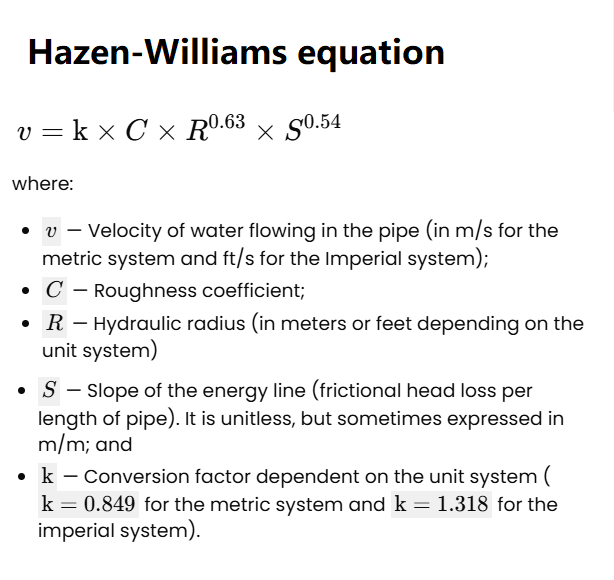Concrete Pipe Gravity Flow Rate Calculator
Introduction to Concrete Pipes
Concrete pipes are widely used in construction and infrastructure projects due to their strength, durability, and cost-effectiveness. They are commonly used for drainage systems, culverts, sewer lines, and stormwater management. Below, we explore the properties, uses, and advantages of concrete pipes.
Properties of Concrete Pipes
- Durability: Concrete pipes are highly durable and can withstand harsh environmental conditions.
- Strength: They have high compressive strength, making them suitable for heavy loads.
- Corrosion Resistance: Concrete is resistant to chemical corrosion, making it ideal for sewer and wastewater systems.
- Fire Resistance: Concrete is non-combustible, providing excellent fire resistance.
- Low Thermal Conductivity: Concrete pipes provide good insulation against temperature changes.
Uses of Concrete Pipes
- Drainage Systems: Used in residential, commercial, and industrial drainage systems.
- Sewer Lines: Ideal for sewer and wastewater transportation due to their corrosion resistance.
- Culverts: Commonly used in road and railway construction for water passage.
- Stormwater Management: Effective in managing stormwater runoff in urban areas.
- Irrigation Systems: Used in agricultural irrigation for water distribution.
Advantages of Concrete Pipes
- Long Lifespan: Concrete pipes can last for decades with minimal maintenance.
- Cost-Effective: They are economical compared to other materials like metal or plastic.
- Eco-Friendly: Made from natural materials like cement, sand, and aggregates, making them environmentally friendly.
- High Load-Bearing Capacity: Suitable for heavy-duty applications such as road and railway culverts.
- Low Maintenance: Requires little to no maintenance over its lifespan.
Material Roughness Coefficients
| Material |
Roughness Coefficient |
| Cast Iron |
100 |
| Concrete |
110 |
| Copper |
140 |
| Plastic |
150 |
| Steel |
120 |
Velocity of Water Flow in a Pipe: An Example
Let’s use the pipe flow calculator to determine the velocity and discharge of a plastic pipe with a diameter of 0.6 feet. The pipe is 15 feet long, and the height difference between the beginning and endpoints is 6 feet.
Step-by-Step Calculation:
1. Calculate the Radius of the Pipe
Divide the diameter by 2 to find the radius:
\[ r = \frac{d}{2} = \frac{0.6}{2} = 0.3 \, \text{ft} \]
2. Find the Cross-Sectional Area of the Pipe
Use the formula for the area of a circle:
\[ A = \pi r^2 = \pi \times 0.3^2 \approx 0.2827 \, \text{ft}^2 \]
3. Determine the Perimeter of the Pipe
Calculate the perimeter using the formula:
\[ P = 2 \pi r = 2 \pi \times 0.3 \approx 1.885 \, \text{ft} \]
4. Calculate the Hydraulic Radius
Divide the area by the perimeter:
\[ R = \frac{A}{P} = \frac{0.2827}{1.885} \approx 0.15 \, \text{ft} \]
5. Select the Roughness Coefficient
Choose "Plastic" from the drop-down list, which has a roughness coefficient of:
\[ C = 150 \]
6. Calculate the Slope of the Pipe
Divide the height difference by the length of the pipe:
\[ S = \frac{y}{L} = \frac{6}{15} = 0.4 \]
7. Use the Hazen-Williams Equation to Find Velocity
Apply the Hazen-Williams formula:
\[ v = 1.318 \times C \times R^{0.63} \times S^{0.54} \]
\[ v = 1.318 \times 150 \times 0.15^{0.63} \times 0.4^{0.54} \approx 36.48 \, \text{ft/s} \]
8. Calculate the Discharge
Multiply the velocity by the cross-sectional area:
\[ Q = A \times v = 0.2827 \times 34.56 \approx 10.31 \, \text{ft}^3/\text{s} \]
Flow Rate Calculator© - All Rights Reserved 2025

